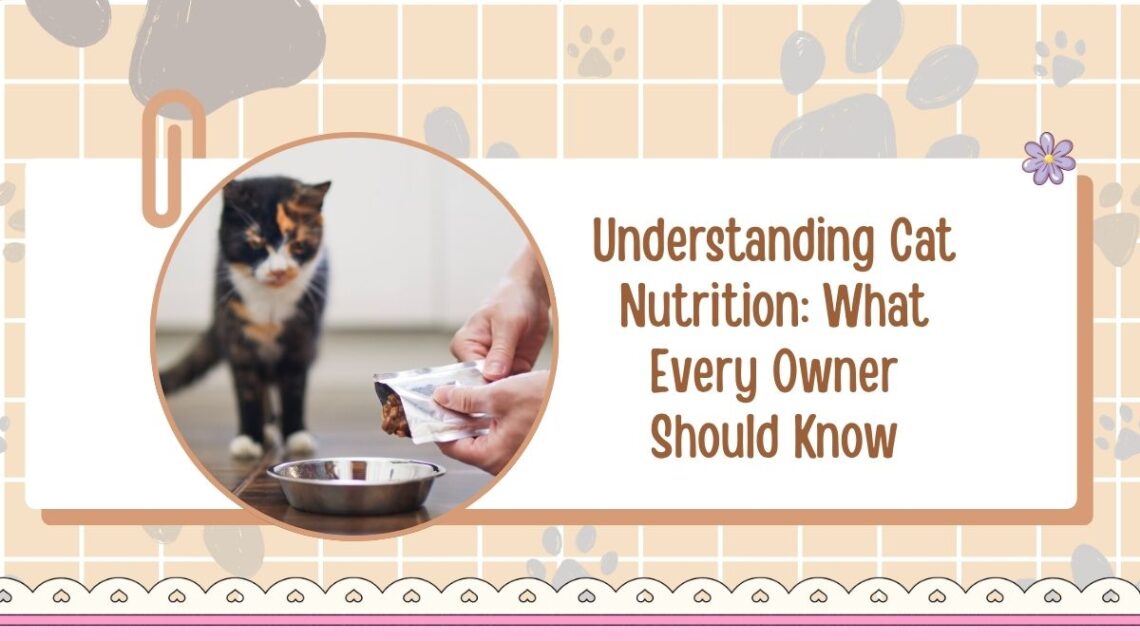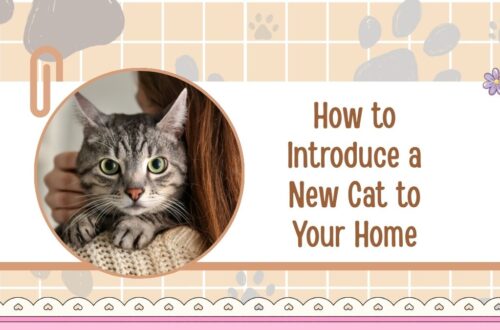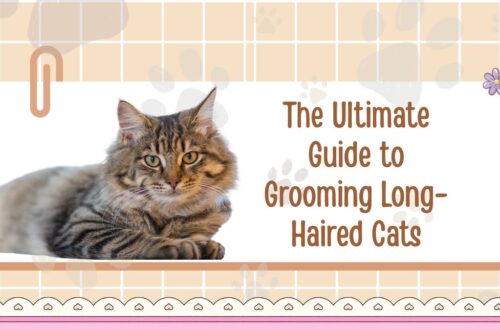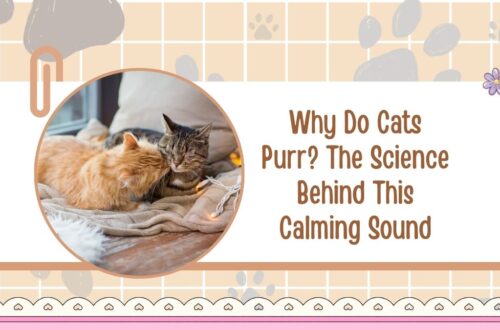Cats aren’t small dogs—and their nutritional needs prove it. As obligate carnivores, cats require specific amino acids (like taurine and arginine), preformed vitamin A, and arachidonic acid that must come from animal tissues.
Meeting these needs consistently supports heart, vision, immune, and reproductive health while helping prevent problems like obesity, urinary issues, and chronic kidney disease (CKD).
Below is an up-to-date, evidence-based guide to cat nutrition—including calorie targets, protein and taurine minimums, water intake goals, wet vs. dry considerations, ingredient label reading, and life-stage adjustments.
Why Feline Nutrition Is Unique
- Obligate Carnivore Biology: Cats evolved to derive energy primarily from protein and fat; they have limited ability to synthesize key nutrients such as taurine, vitamin A, and arachidonic acid, so these must be supplied in food.
- Carbohydrates: Many commercial diets include digestible carbs; healthy cats can utilize some carbohydrate, but their ancestral diet is naturally low-carb and high-protein/fat.
The Core Nutrients Cats Must Get Right
Protein (And Amino Acids)
- For adult maintenance, recognized guidelines indicate ~26% protein (dry matter); for growth/reproduction, ~30% protein (dry matter) or specific grams per 1,000 kcal are used in professional formulation.
- Taurine is essential in all life stages. Minimums commonly cited in standards are 0.10% (extruded/dry) and 0.20% (canned) on a dry-matter basis to prevent deficiency.
Fats And Essential Fatty Acids
- Linoleic acid and arachidonic acid must be present; cats cannot make enough arachidonic acid from precursors. Arachidonic acid minimums (dry matter) appear in modern profiles at ~0.02%.
Minerals And Vitamins To Watch
- Balanced calcium and phosphorus are critical for bones and kidneys (typical adult minimums often referenced: Ca ~0.6%, P ~0.5% dry matter).
- Preformed vitamin A is required (cats don’t convert β-carotene efficiently). Niacin must come from the diet, too.
Takeaway: Look for complete diets that meet recognized nutrient profiles and are labeled “complete and balanced” for your cat’s life stage.
How Many Calories Should A Cat Eat?
Energy needs vary by age, body condition, activity, and whether a cat is neutered. Useful contemporary ranges:
- Many adult cats around 4–5 kg (9–11 lb) maintain on ~200–300 kcal/day, depending on activity and metabolism. Reference charts for typical body weights put common daily needs in that zone.
- Wet-food portioning examples and charts (by body weight and life stage) help you translate those calories into cans/day.
Calorie density matters:
- Dry food: commonly ~300–500 kcal per cup (check your bag).
- Wet food: commonly ~70–100 kcal per 3-oz (85 g) can.
Hydration: The Hidden Key To Urinary And Kidney Health
Cats have a low thirst drive compared to other species. Practical targets:
- Water intake: about 50–60 mL/kg/day—roughly 1 cup (240 mL) for a 10-lb (4.5-kg) cat. Wet-food eaters drink less at the bowl because canned diets contain ~70–80% water.
Tips to increase water: offer wet food, use fountains, place multiple bowls, and keep water fresh.
Wet vs. Dry: What’s Best?
- Dry food is convenient and energy-dense (easy to overfeed); typical moisture ~10% and often extruded.
- Wet food provides high moisture (68–78%), can aid hydration and satiety, and is useful in weight control plans when measured correctly.
Balanced approach: Many owners feed a mixed diet (measured wet + measured dry) to blend hydration, texture preference, and calorie control.
Label Reading: Choose Complete, Balanced, And Transparent
- Look for life-stage adequacy (e.g., “complete and balanced for adult maintenance” or “all life stages”), substantiated by nutrient profiles or feeding trials.
- Check calorie statement (kcal per cup/can) to portion accurately.
- Ingredients vs. nutrients: Ingredients list sources; the guaranteed analysis and nutrient profile matter most for health.
Weight Management: The #1 Nutrition Problem In Cats
Overweight and obesity remain widespread. Veterinary and industry data show sustained concern:
- A large U.S. survey in 2022 reported ~61% of cats overweight or obese (vet-assessed).
- In 2024 owner-opinion polling, 33% of cat owners categorized their cats as overweight/obese—awareness is improving but still inconsistent.
Action plan for healthy weight:
- Ask your vet for a Body Condition Score (BCS) and muscle condition score at every visit. Owner awareness of BCS remains low in surveys—advocate for it.
- Weigh meals with a gram scale. Use the diet’s kcal per cup/can to hit daily targets.
- Prefer wet or mixed feeding for some cats to aid satiety and hydration; adjust portions over 2–4 weeks based on weekly weigh-ins.
Special Diet Considerations
Senior Cats And Kidney Support
- For cats with CKD, newer guidance emphasizes phosphorus restriction (commonly ~80–135 mg/100 kcal) to slow progression; not all senior diets meet these targets, so veterinary renal diets are often recommended.
Urinary Health
- Water intake and appropriate mineral balance (including phosphorus and magnesium) help reduce urinary concentration and crystal formation—another reason wet or mixed feeding can benefit some cats.
Food Safety And “People Foods” To Avoid
- Never feed: onions/garlic, grapes/raisins, alcohol, xylitol, chocolate, highly caffeinated items, etc. Keep stringy packaging/holiday décor out of reach.
Practical Feeding Framework (Daily)
Use this table as a starting point and adjust with your veterinarian based on BCS, age, and activity.
| Cat Weight | Typical Daily Calories (Range) | Typical Water Goal | Quick Notes |
|---|---|---|---|
| 3 kg (6.6 lb) | 200–210 kcal/day | 150–180 mL/day (~⅔–¾ cup) | Small, often active adults. Start low if indoor/sedentary. |
| 4 kg (8.8 lb) | 225–250 kcal/day | 200–240 mL/day (~¾–1 cup) | Common indoor weight; monitor weekly. |
| 4.5–5 kg (10–11 lb) | 240–300 kcal/day | 225–270 mL/day (~1 cup) | Many adults maintain here with measured wet+dry. |
| 6–7 kg (13–15 lb) | 275–370 kcal/day | 300–420 mL/day (1¼–1¾ cups) | Evaluate BCS—some cats at this weight are overweight. |
Portion translation: Check your label for kcal per cup (dry) or kcal per can (wet). Many dry foods run ~300–500 kcal/cup; many 3-oz cans provide ~70–100 kcal.
Life-Stage Feeding: Kitten, Adult, Senior
- Kittens (0–12 months): Need more protein, fat, and energy per body weight. Feed growth/all-life-stages diets and split into 3–4 meals/day.
- Adults (1–7 years): Maintain ideal BCS 4–5/9 with measured portions, enrichment, and play to burn calories.
- Seniors (7+): Appetite and smell may wane; prioritize palatability, moisture, and routine screening (especially kidneys and thyroid). For any diagnosed disease, follow a veterinary therapeutic diet plan (e.g., CKD phosphorus targets).
Building The Bowl: A Step-By-Step Plan
- Pick a complete & balanced diet for the correct life stage, validated by recognized nutrient profiles or feeding trials.
- Calculate starting calories from a current weight chart, then convert to portions using the food’s kcal statement.
- Increase moisture: feed wet or mixed, add fountains/bowls, and monitor urination and stool quality.
- Measure and track: weigh meals; re-weigh your cat weekly; adjust by 5–10% every 2–4 weeks to keep/achieve ideal BCS.
- Avoid unsafe foods and supplements unless directed by your veterinarian; more isn’t always better (excesses can harm).
Feeding a cat well in 2025 means more than choosing a trendy label: it’s about hitting evidence-based nutrient targets (adequate protein, taurine, essential fatty acids, balanced minerals), ensuring the right calories, and promoting hydration.
Combine label literacy, measured portions, and routine BCS checks with your veterinarian’s guidance. Whether you feed wet, dry, or a mix, prioritize complete and balanced, portion control, and water intake—and you’ll be doing the most important things to support your cat’s longevity, comfort, and quality of life.
FAQs
Not necessarily. Healthy cats can digest some carbohydrate, but diets should remain protein-forward with appropriate fatty acids and micronutrients. Focus on complete and balanced over any single marketing claim.
Each has pros and cons. Wet aids hydration and satiety, while dry is convenient and energy-dense (requiring strict portion control). Many cats thrive on a measured mixed approach tailored to their BCS and health.
Avoid onions/garlic, grapes/raisins, alcohol, xylitol, chocolate, and caffeinated products; keep hazardous items out of reach year-round. If ingested, contact your vet immediately.





